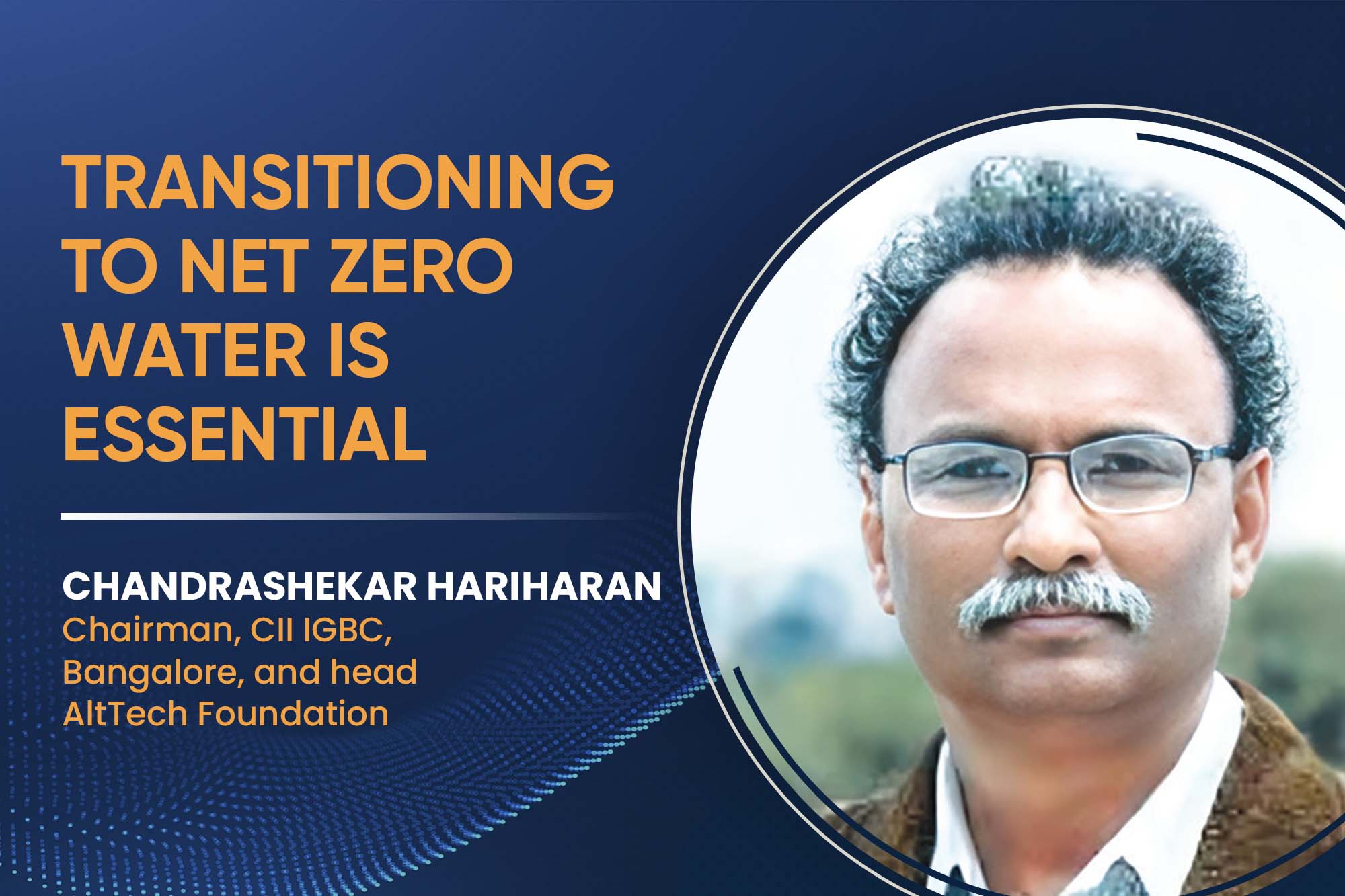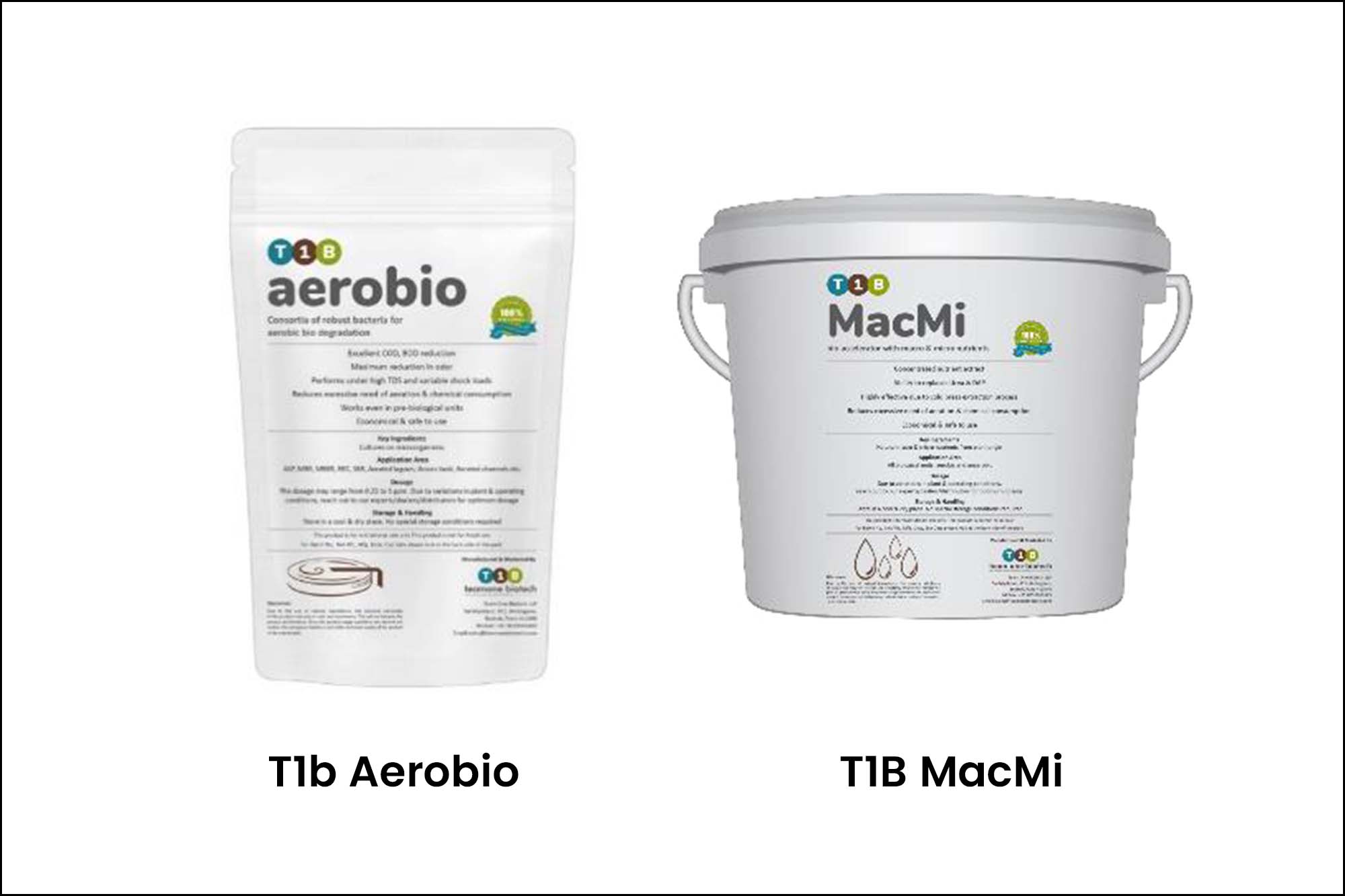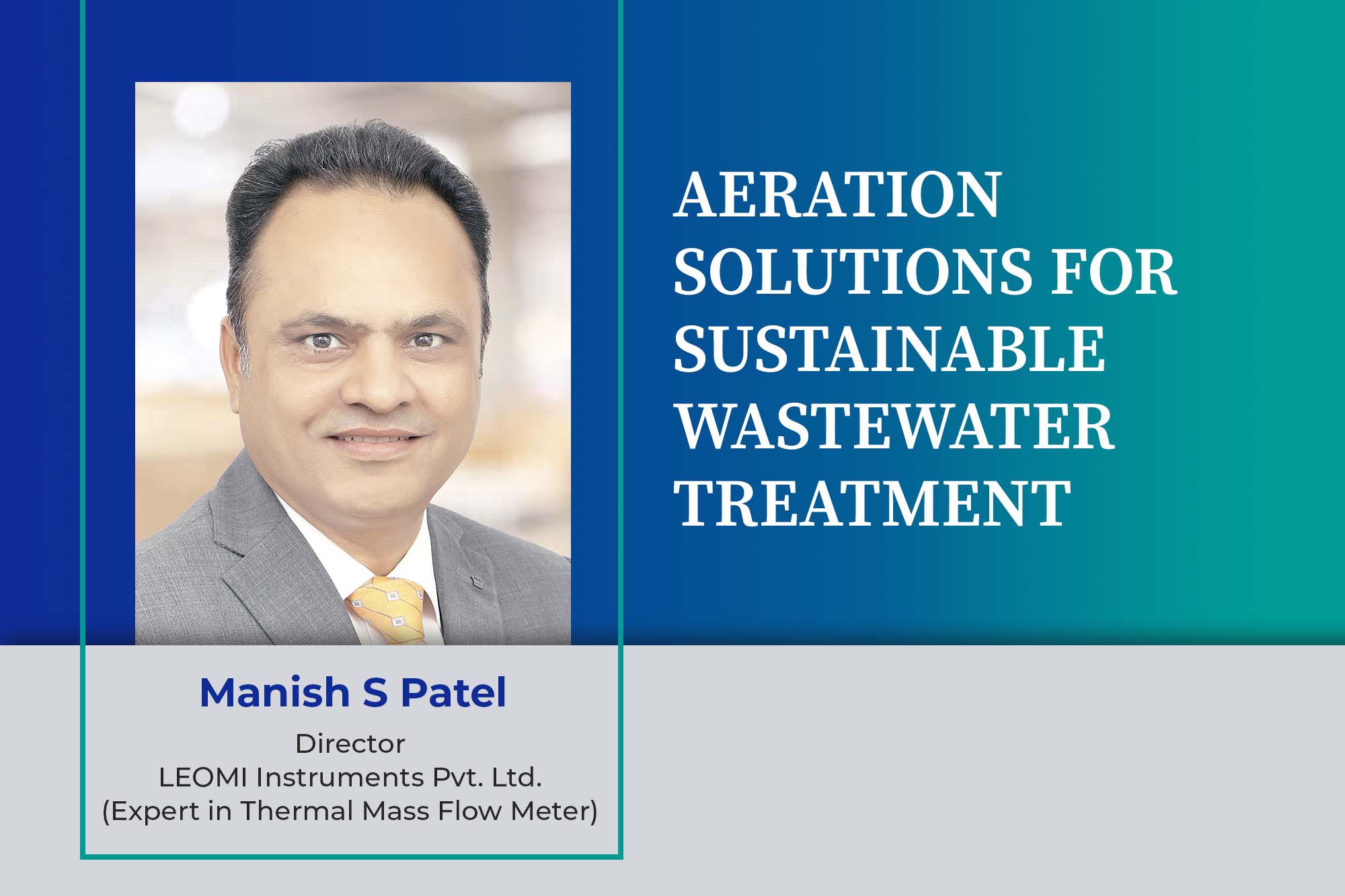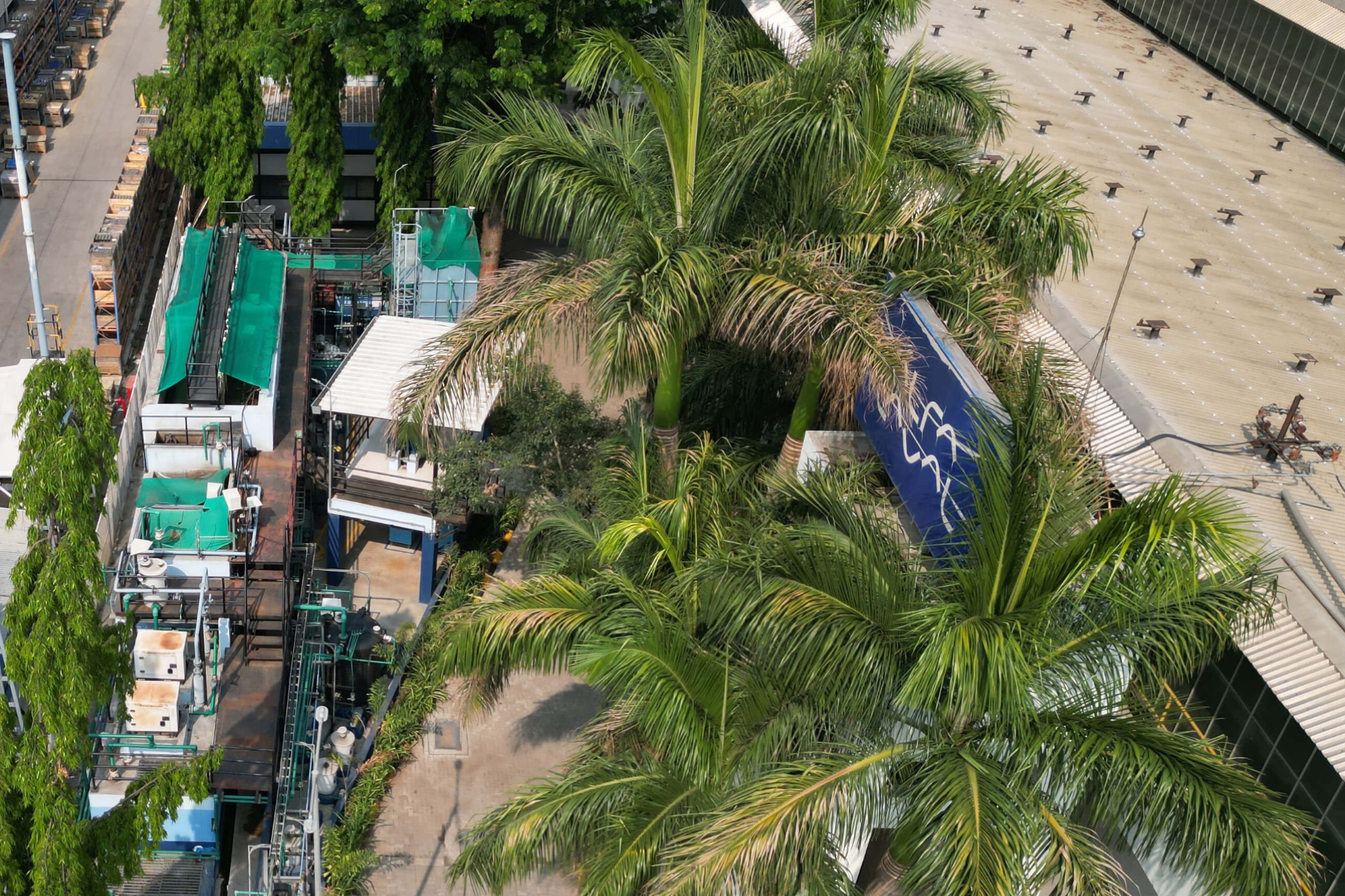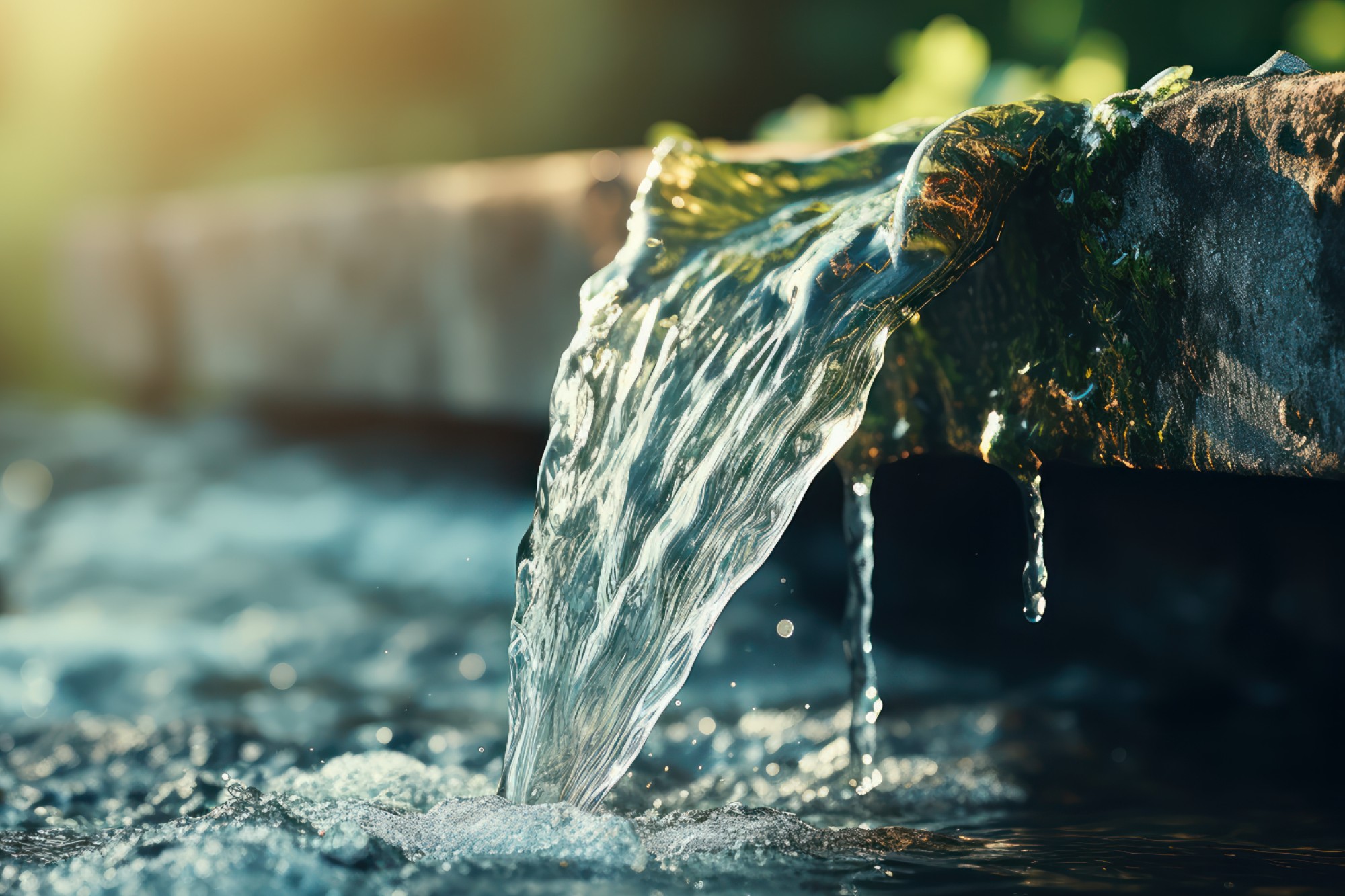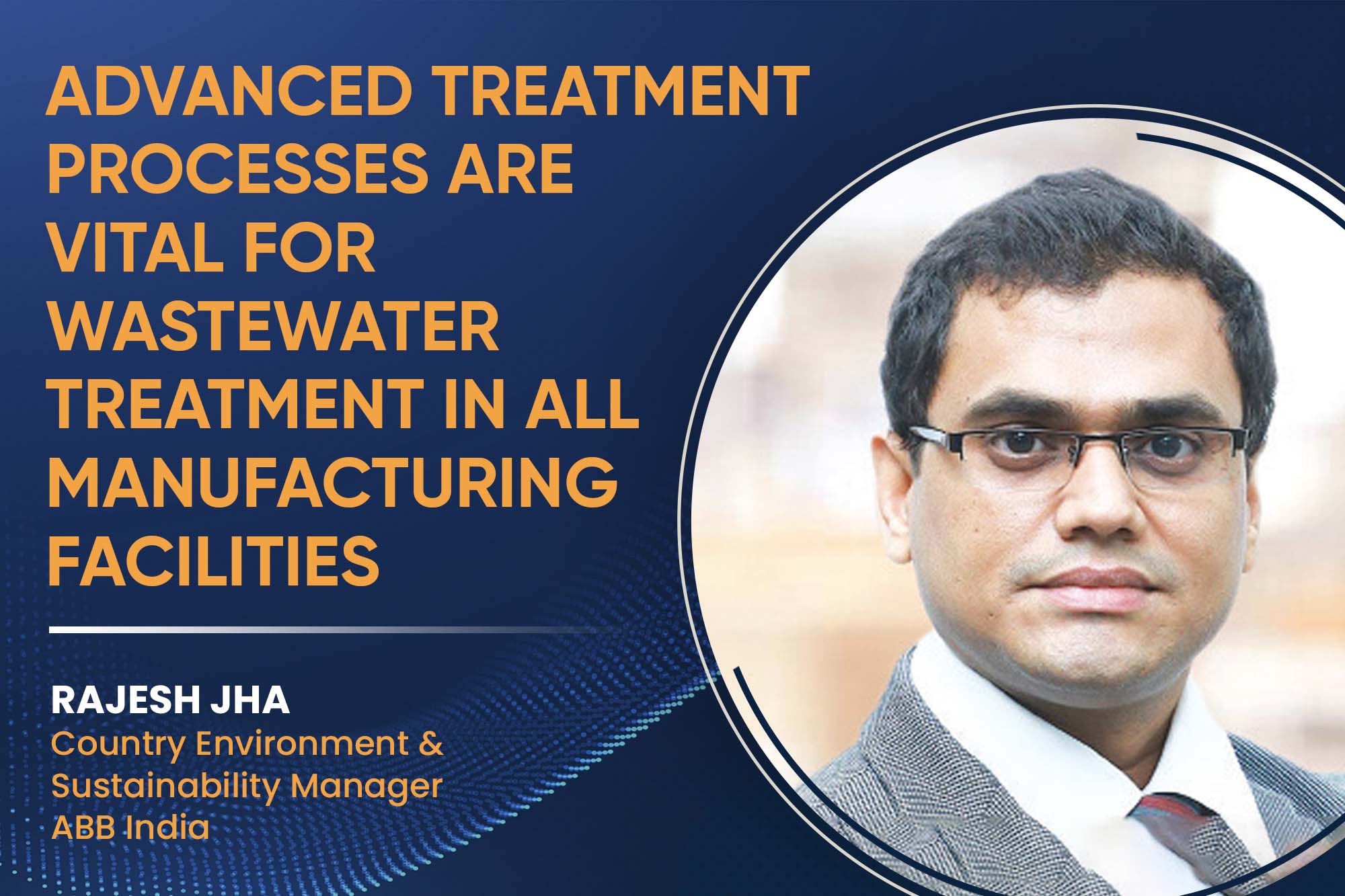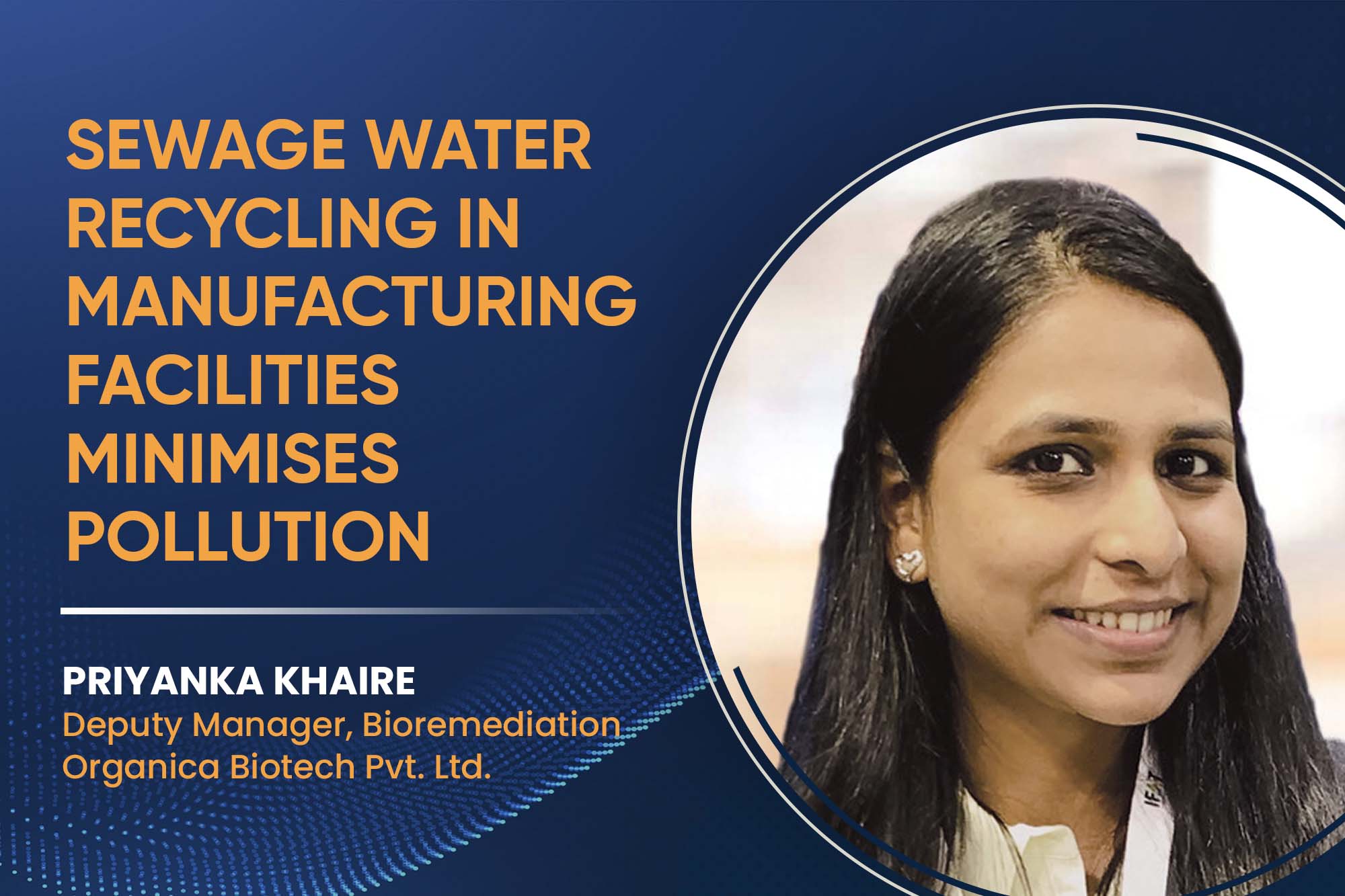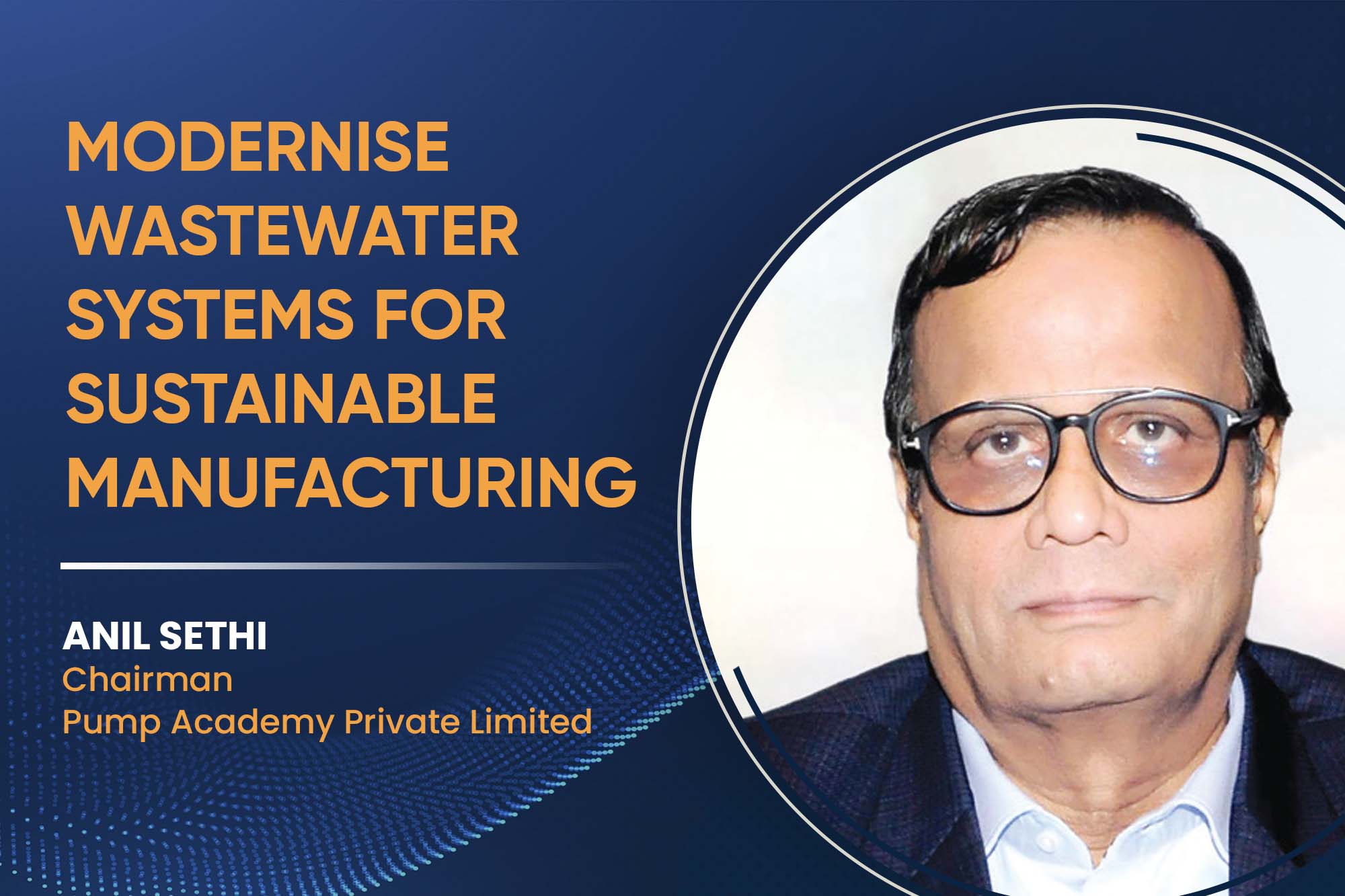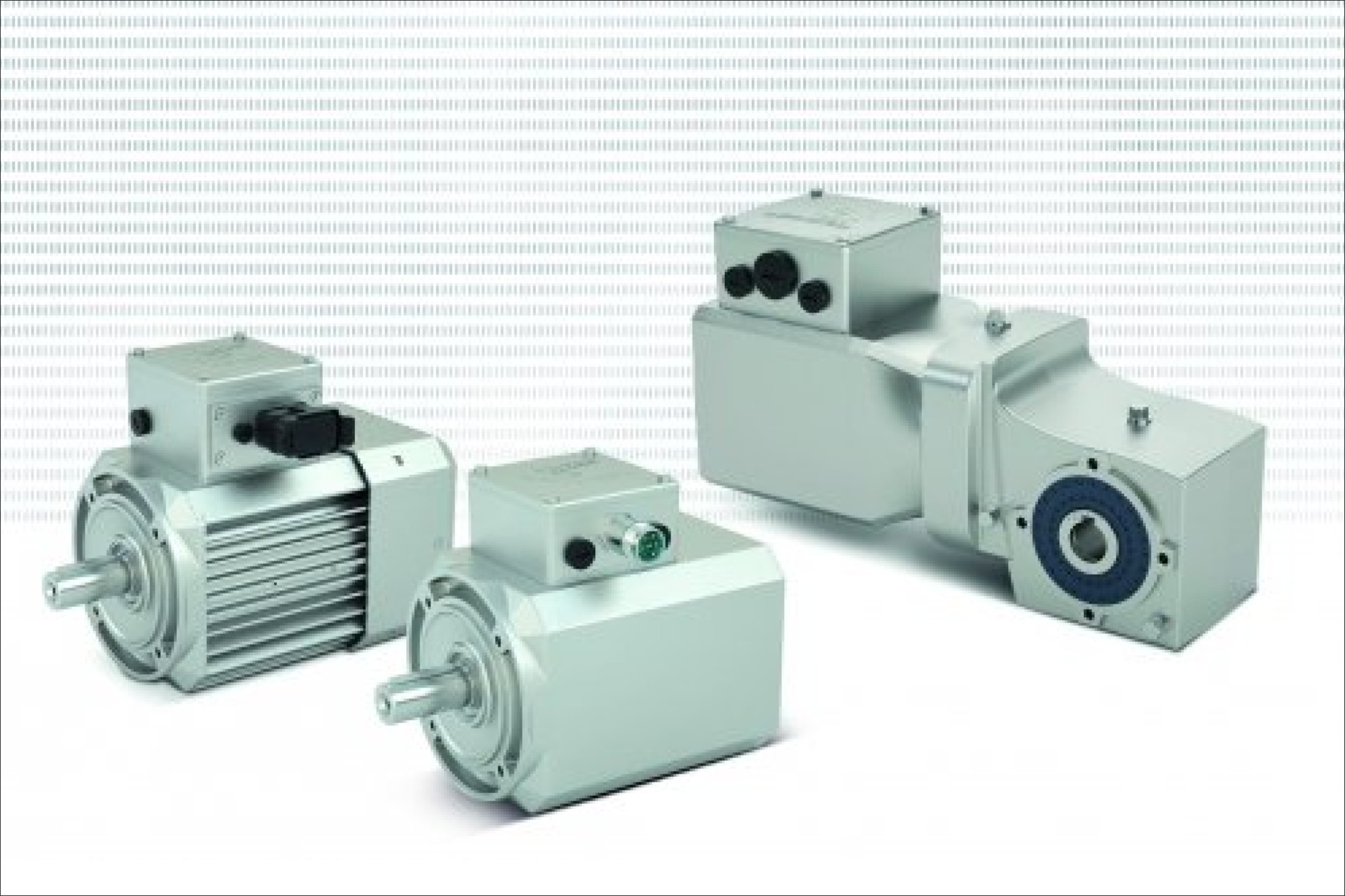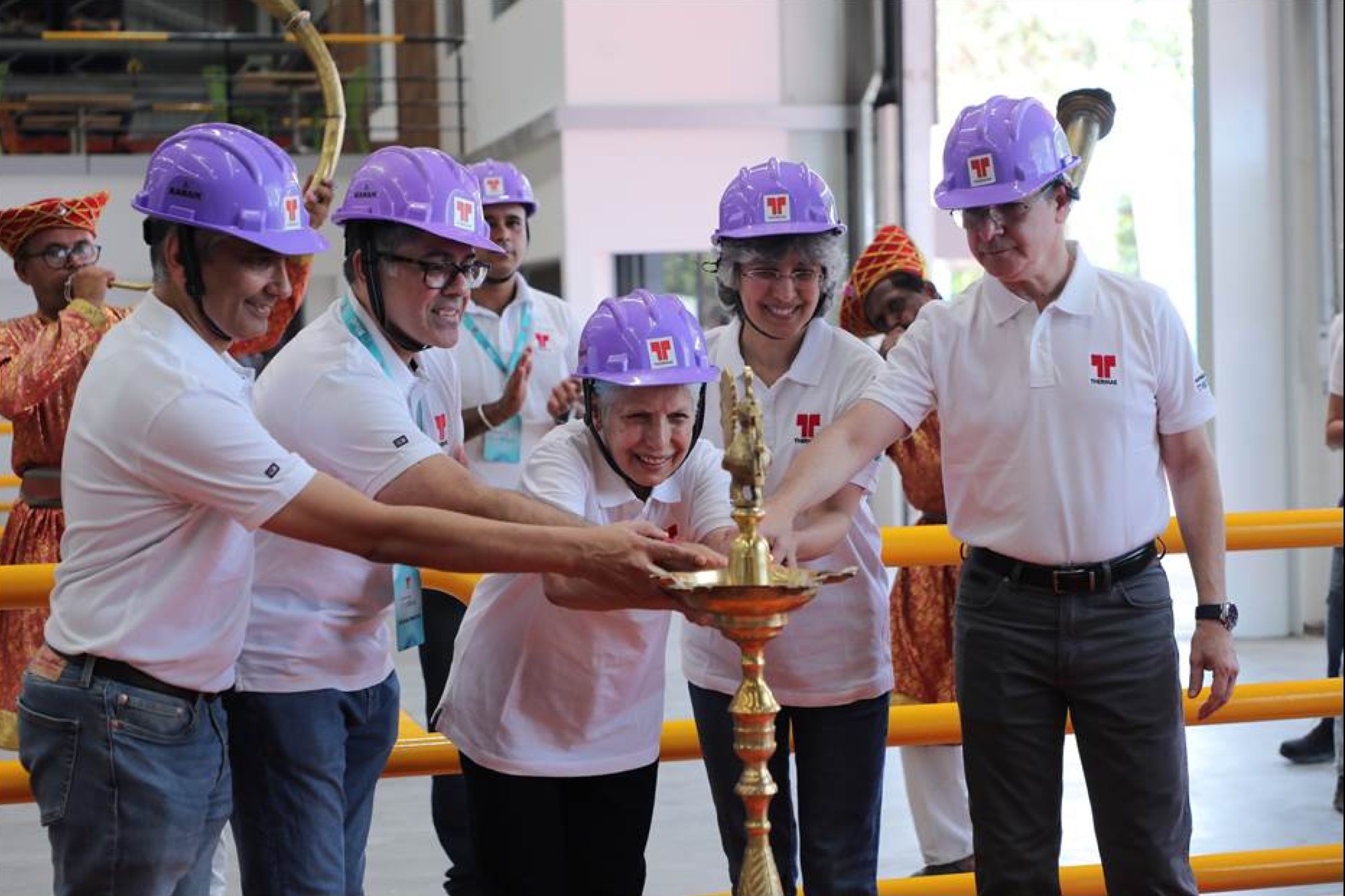Transitioning to Net Zero Water is essential
By OEM Update Editorial April 30, 2024 7:26 pm IST
As Chairman of CII IGBC, Bangalore, and head of the AltTech Foundation, Chandrashekar Hariharan provides insight into the role of water treatment in industrial sustainability. He says manufacturing sites encounter the complex task of choosing suitable technologies to handle effluent and chemical discharge. Efficient wastewater treatment hinges on addressing factors like heavy metal contamination and industrial waste complexities.
How do we manage water and wastewater treatment to sustain operational efficiency?
Industrial water consumption in India is estimated to be around 1 percent on average. Major consumers include the power sector, steel and mining industries, cement production, and other core manufacturing sectors, along with numerous MSME clusters engaged in pharmaceuticals, textiles, and alloys. Industrial wastewater has chemical contamination with heavy metals, which makes treatment different from biologically contaminated wastewater from human use. State Pollution Control Boards have set firm regulations for declaring the quantum of daily wastewater discharge and filing reports on the quality of treated water discharged from such manufacturing centres.
The water and wastewater management in industries are assigned to local industrial area development boards, which are responsible for establishing infrastructure for wastewater management and providing fresh water for manufacturing or human consumption. In Tamil Nadu, major smartphone manufacturing facilities have been granted access to river water through direct pipelines, a practice that is not sustainable in the long run. Conversely, SriCity has developed infrastructure for treating wastewater and recirculating it within industrial units, demonstrating a more sustainable approach. Many others in the traditional MSME sector do not have such infrastructure from the IADBs, nor the ability to treat and reuse water in their facilities.
Efficient water management encompasses several strategies. One is implementing Smart demand-side management. It includes installing flow-efficient fixtures and consistently monitoring water usage. Additionally, water harvesting within the manufacturing facility is crucial. Furthermore, reducing reliance on external water sources by minimising tanker purchases and utilising on-site borewells is essential.
India’s population is expected to grow by 225 million (nearly the entire Indian population of 1900) over the next three decades. Relying solely on rivers to meet our freshwater needs is unsustainable. The wastewater generated today will become a water source in the future, emphasising the importance of understanding the nature of water before considering treatment methods.
The methodology for achieving Net Zero Water status in manufacturing facilities is now accessible, allowing the industry to set goals and objectives. Many water professionals and discerning users across India have demonstrated effective planning and execution strategies. Organisations like the AltTech Foundation have guided numerous facilities in securing millions of litres of low-carbon water without using in-house borewells or purchasing water from tankers at high costs. The Net Zero Water guidelines provided by the government offer a clear framework. With the assistance of engineering professionals, these can be implemented in any manufacturing facility. Remember that knowing the science of water must precede the application of engineering solutions.
Please discuss factors to consider when choosing water treatment technologies to manage industrial effluent.
The presence of heavy metals like chromium and other elements in industrial water, in addition to chemical residues, makes industrial effluents all the more challenging to treat than simple biologically contaminated water. Influent water treatment is different from regular wastewater.
A brief online search reveals that influent refers to untreated industrial wastewater, effluent refers to treated industrial wastewater, and sludge denotes the solid portion separated from wastewater by an Effluent Treatment Plant (ETP). Traditional processes include using alum, chlorine, and sodium bisulfate for treatment. It is sufficient to mention that coagulation and flocculation are crucial processes in wastewater treatment, including for Effluent Treatment Plants (ETPs).
The chemicals are added to wastewater during the processes to remove impurities through physical processes.How do we manage risks related to contaminants in wastewater discharge and industrial hygiene?
Manufacturing facilities address the risks associated with contaminants and pollutants in wastewater discharge and industrial hygiene by employing appropriate chemical and metallic contamination treatment. However, setting up such treatment plants for chemical and metallic contaminants entails significantly higher costs than regular sewage treatment plants.
The return on investment for such plants, considering the current cost of water purchase of about ₹100 per kilolitre or ten paise per litre, is typically around 7-8 years, in contrast to the 2.5-3 years for regular sewage treatment plants. This financial challenge has dissuaded many industrial units from investing in their treatment infrastructure, leading them to rely on the government to create such facilities, highlighting the need for urgent resolution.
In India, industrial wastewater accounts for approximately 60 billion litres per day, while the combined daily water demand and discharge for human use in cities amount to about 36 billion litres. Between the two, they account for about 20 per cent , with 80 per cent of annual rainwater in India consumed by agriculture.
What role do advanced treatment processes play in improving the efficiency and effectiveness of wastewater treatment in manufacturing facilities?
The effectiveness of wastewater treatment is not solely determined by technology. One crucial aspect is holding back sludge at individual industrial units before sending the remaining water to a centralised treatment plant. It is one of the critical determinants of economic approaches. It is good to combine decentralised and centralised systems for industrial clusters or Area Development Boards (ADBs). This topic warrants a more in-depth discussion.
What strategies can be adopted for water reuse and recycling to reduce freshwater use and wastewater discharge?
Transitioning to Net Zero Water is essential. It cannot be viewed as an alternative to the current challenges associated with long-distance water sourcing, storage, distribution, and wastewater disposal. The concept of “used water is the new oil” must be comprehended by government agencies and industrial bulk water users. The new water policy in early 2023 represents a step in this direction. A combination of incentives and regulatory measures is necessary to incentivise compliance. It is imperative to provide comprehensive training to inspectors from all state Pollution Control Boards to enforce Net Zero Water policies across all manufacturing facilities.
The goal is hard to achieve without national commitment and cooperation from water-polluting facilities. There are inspiring examples of large-scale consumers like glass and paint manufacturers with massive daily demand of 4 MLD. They have successfully implemented water harvesting, conservation, and reuse and advanced filtration systems to convert wastewater into drinking water. These success stories are examples to encourage adoption, particularly among MSMEs and small to medium-sized enterprises- to adopt.
Cookie Consent
We use cookies to personalize your experience. By continuing to visit this website you agree to our Terms & Conditions, Privacy Policy and Cookie Policy.



